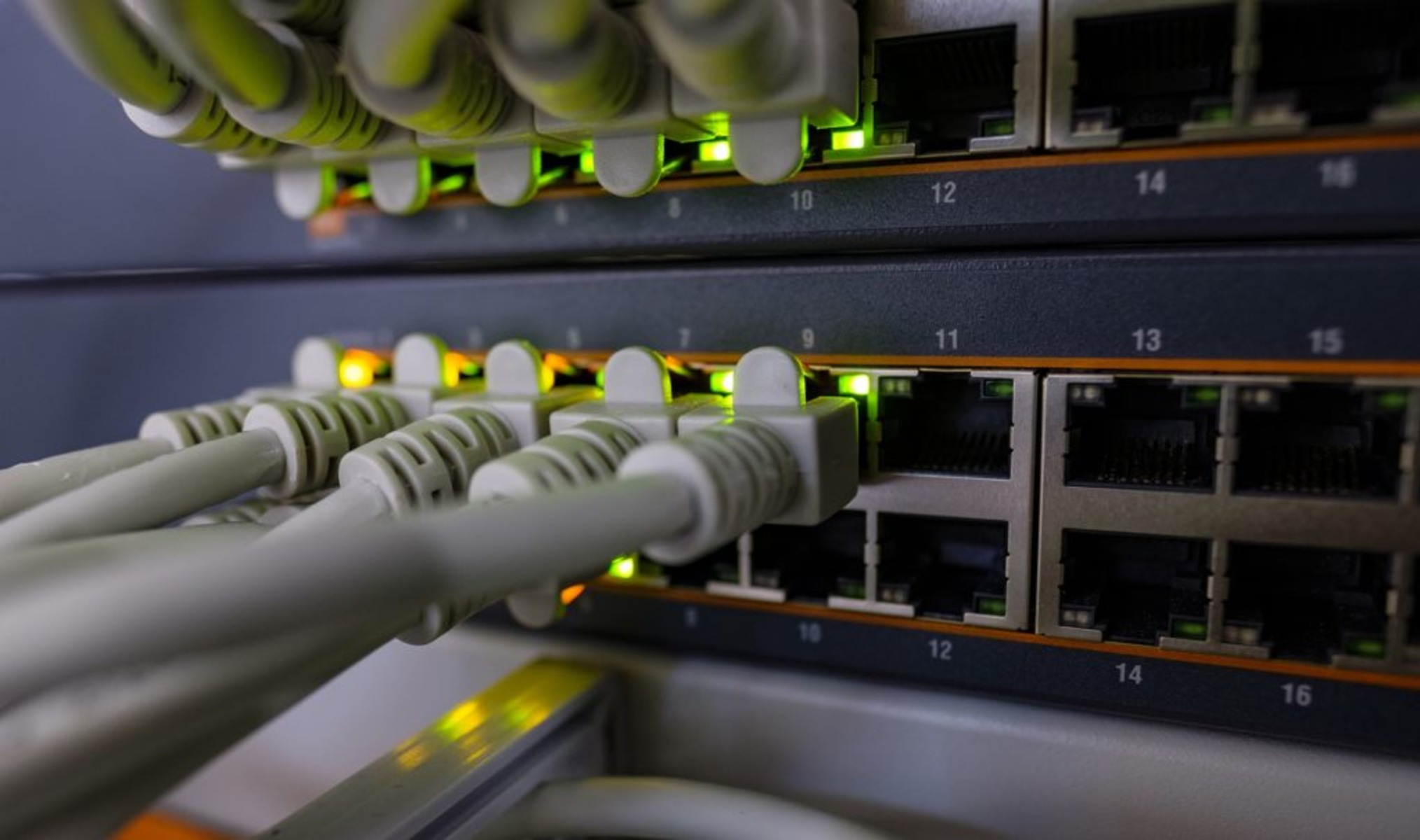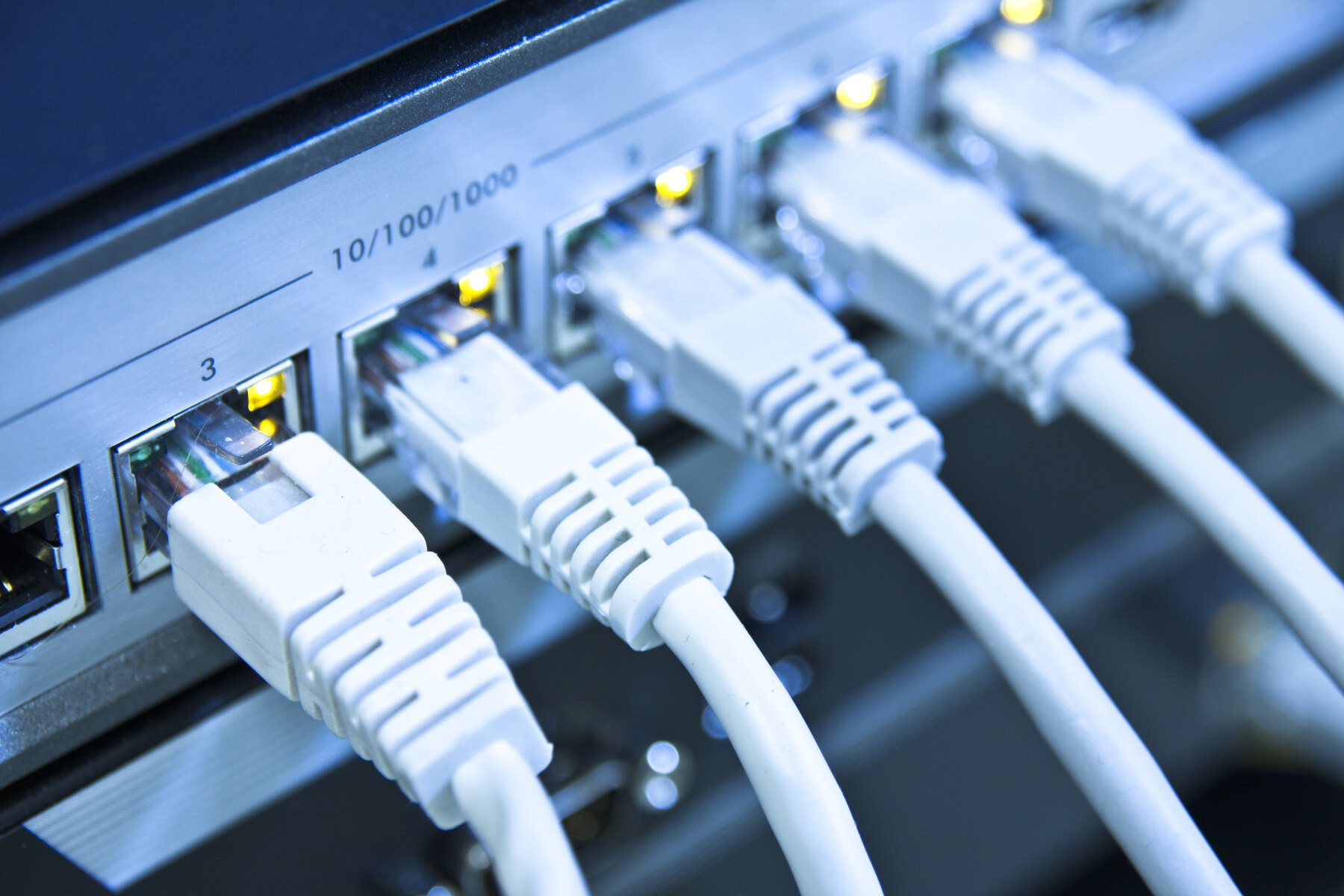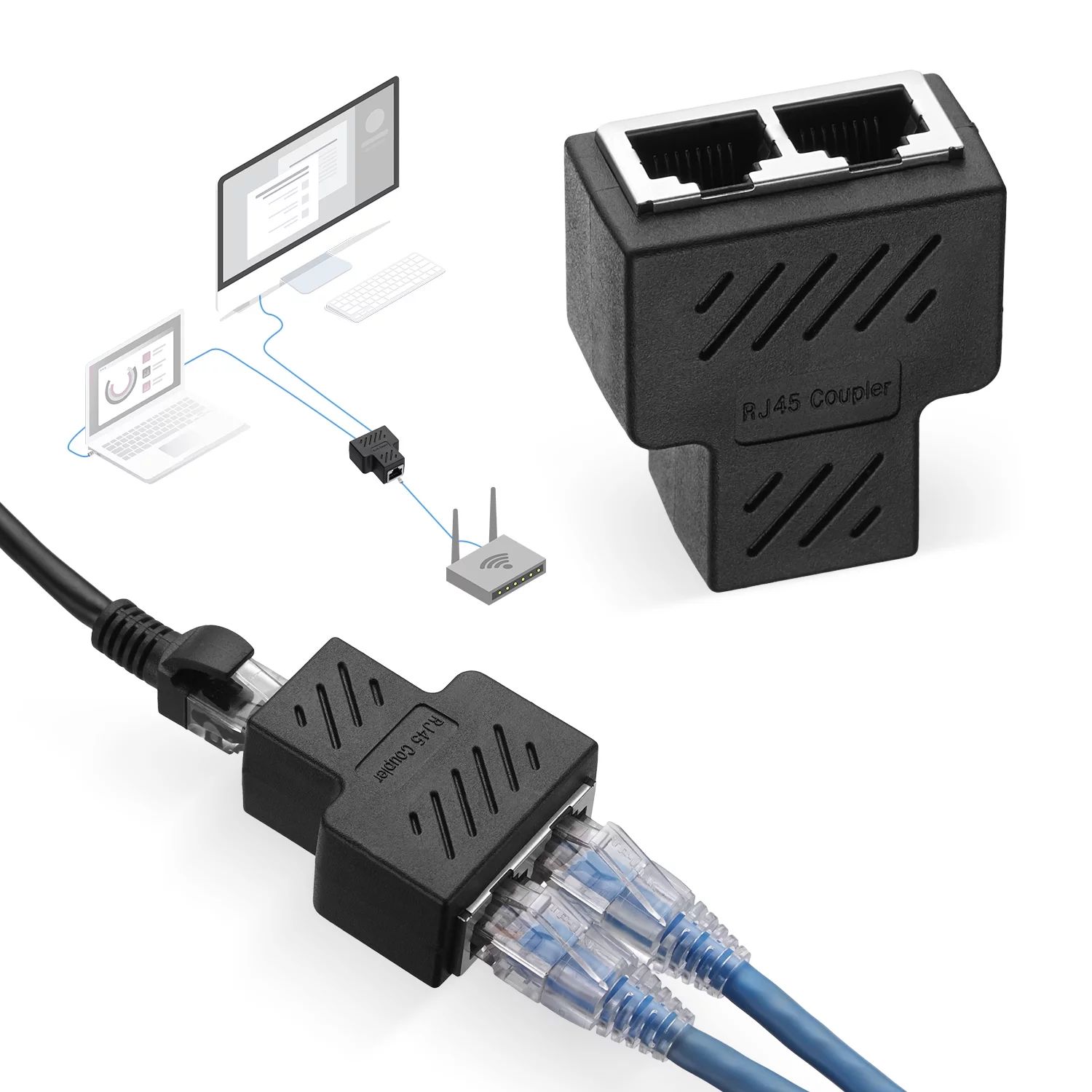Introduction
Understanding the intricacies of network switches and their impact on network speed is crucial in today's digital landscape. As businesses and individuals rely on seamless connectivity for various activities, the role of network switches in maintaining optimal speed cannot be overstated. In this article, we delve into the functionality of network switches and explore the factors that can potentially lower their speed. By shedding light on these aspects, we aim to provide valuable insights into optimizing network performance and addressing potential speed issues.
The article will navigate through the fundamental concepts of network switches, elucidating their operational mechanisms and the variables that influence their speed. By examining the impact of network switch configuration on speed, we will uncover actionable strategies for enhancing network performance. Whether you are a tech enthusiast, a business owner, or an individual seeking to optimize your home network, this exploration of network switch speed will equip you with the knowledge to make informed decisions and maximize the efficiency of your network infrastructure.
Let's embark on a journey to unravel the intricacies of network switches and gain a deeper understanding of their role in shaping network speed. Through this exploration, we aim to empower readers with the knowledge to address speed-related challenges and harness the full potential of their network infrastructure.
What is a Network Switch?
A network switch is a fundamental component of modern networking infrastructure, serving as a central hub for connecting devices within a local area network (LAN). Unlike traditional hubs that indiscriminately broadcast data to all connected devices, a network switch intelligently routes data packets to their intended destinations. This targeted approach enhances network efficiency and minimizes unnecessary data transmission, resulting in improved speed and performance.
At its core, a network switch operates at the data link layer of the OSI model, facilitating the seamless transfer of data between devices. By utilizing MAC addresses to identify connected devices, a network switch efficiently manages network traffic, allowing for simultaneous communication between multiple devices without compromising speed or reliability.
Network switches come in various configurations, including unmanaged, managed, and smart switches, each offering distinct features tailored to different networking requirements. Unmanaged switches are plug-and-play devices that require minimal configuration, making them suitable for small-scale deployments. In contrast, managed switches provide advanced customization options, allowing network administrators to exert precise control over network traffic, quality of service (QoS) parameters, and security protocols.
With the proliferation of network-connected devices in both residential and commercial settings, the role of network switches in optimizing network speed and performance has become increasingly critical. Whether facilitating seamless data transfer in a corporate environment or supporting a myriad of interconnected smart devices in a modern home, network switches form the backbone of reliable and efficient network communication.
How Does a Network Switch Work?
Network switches operate by intelligently managing and directing data traffic within a local area network (LAN). When a device connected to the network initiates communication with another device, the network switch plays a pivotal role in ensuring that data packets are efficiently routed to their intended destinations, thereby facilitating seamless and rapid data transfer.
Upon receiving data packets from a transmitting device, the network switch utilizes the Media Access Control (MAC) addresses of the sender and recipient to determine the optimal path for the data to traverse. This process, known as packet switching, enables the switch to forward the data exclusively to the targeted device, minimizing unnecessary data transmission and optimizing network speed.
Unlike network hubs, which indiscriminately broadcast data to all connected devices, network switches create individual communication channels between devices, allowing for simultaneous data transfer without causing congestion or compromising speed. This intelligent routing mechanism enhances network efficiency and minimizes data collisions, resulting in a smoother and more responsive network experience.
Furthermore, network switches support full-duplex communication, enabling devices to transmit and receive data simultaneously. This bidirectional data flow eliminates the need for devices to contend for network bandwidth, further bolstering network speed and responsiveness.
In managed switch environments, network administrators can leverage advanced features such as VLANs (Virtual Local Area Networks) and Quality of Service (QoS) settings to prioritize specific types of network traffic, ensuring that critical data receives preferential treatment in terms of speed and bandwidth allocation. These capabilities empower organizations to tailor their network infrastructure to suit their specific operational requirements, optimizing speed and performance across diverse networking scenarios.
By orchestrating the seamless flow of data and optimizing network traffic, network switches play a pivotal role in ensuring that connected devices can communicate efficiently and at optimal speeds within a LAN environment.
Factors Affecting Network Switch Speed
Several factors can influence the speed and overall performance of a network switch, impacting the seamless transfer of data within a local area network (LAN). Understanding these variables is crucial for optimizing network speed and addressing potential bottlenecks that may hinder efficient data transmission.
- Network Traffic Volume: The volume of data traversing the network infrastructure can significantly impact switch speed. High network traffic levels can lead to congestion and packet collisions, resulting in decreased speed and responsiveness. Implementing efficient traffic management strategies, such as Quality of Service (QoS) configurations, can mitigate these issues and ensure that critical data receives priority, thereby enhancing network speed.
- Switch Capacity and Throughput: The inherent capacity and throughput capabilities of a network switch play a pivotal role in determining its speed. Switches with higher throughput capacities can accommodate greater data volumes without compromising speed, making them suitable for demanding networking environments where rapid data transfer is essential.
- Network Interface Speed: The speed of the network interfaces on the switch, typically measured in terms of data transfer rates (e.g., 1 Gigabit per second), directly influences the speed at which data can be transmitted between connected devices. Utilizing switches with higher interface speeds can bolster network performance and facilitate faster data transfer.
- Network Topology and Cable Quality: The physical layout of the network and the quality of cabling infrastructure can impact switch speed. Optimal network topologies and high-quality cabling minimize signal degradation and transmission errors, ensuring that data can traverse the network at maximum speed without encountering impediments.
- Switch Buffer Size: The buffer size of a network switch influences its ability to handle bursts of network traffic without experiencing packet loss or performance degradation. Switches with larger buffer sizes can effectively manage fluctuating traffic levels, maintaining consistent speed and minimizing data latency.
By comprehensively evaluating and addressing these factors, network administrators and individuals can proactively optimize network switch speed, fostering a responsive and efficient networking environment that meets the demands of modern connectivity.
Impact of Network Switch Configuration on Speed
The configuration of a network switch exerts a profound influence on its speed and overall performance within a local area network (LAN). By implementing strategic configurations and leveraging advanced features, network administrators can optimize switch speed, enhance data transfer efficiency, and mitigate potential bottlenecks that may impede network responsiveness.
Quality of Service (QoS) settings play a pivotal role in prioritizing specific types of network traffic, ensuring that critical data receives preferential treatment in terms of speed and bandwidth allocation. By assigning priority levels to different types of traffic, such as voice, video, or mission-critical applications, network administrators can safeguard essential data from potential congestion and latency issues, thereby bolstering network speed and responsiveness.
Virtual Local Area Networks (VLANs) enable the segmentation of a single physical network into multiple logical networks, each with its own distinct characteristics and security parameters. By segregating network traffic based on logical groupings, VLANs facilitate efficient data transfer and enhance network speed by minimizing unnecessary data transmission to devices that do not require the information, thereby optimizing overall network performance.
Link aggregation, also known as port trunking or bonding, allows network administrators to combine multiple physical network links into a single high-speed logical link. This configuration not only enhances network speed by aggregating the bandwidth of individual links but also provides redundancy and load balancing, ensuring that data can traverse the network at optimal speeds while mitigating the impact of link failures.
Furthermore, optimizing the Spanning Tree Protocol (STP) configuration is crucial for preventing network loops and ensuring seamless data transfer within complex network topologies. By strategically configuring STP parameters, network administrators can eliminate redundant paths and optimize network speed, fostering a stable and efficient networking environment.
By leveraging these advanced configurations and features, network administrators can proactively optimize network switch speed, enhance data transfer efficiency, and create a responsive and reliable networking infrastructure that meets the demands of modern connectivity.
Conclusion
Network switches form the backbone of modern networking infrastructure, facilitating seamless data transfer and efficient communication within local area networks (LANs). Understanding the factors that influence network switch speed and the impact of strategic configurations is paramount in optimizing network performance and addressing potential speed-related challenges.
By comprehensively exploring the operational mechanisms of network switches and the variables that affect their speed, individuals and organizations can proactively enhance their networking environments to meet the demands of today’s interconnected world. Whether managing a corporate network, optimizing a home network, or overseeing a complex network infrastructure, the insights gleaned from this exploration can empower network administrators and enthusiasts to make informed decisions and implement strategies to maximize network speed and responsiveness.
From the intelligent routing capabilities of network switches to the influence of network traffic volume, switch capacity, and interface speeds, the multifaceted nature of network switch speed underscores the importance of proactive optimization. Leveraging advanced configurations such as Quality of Service (QoS) settings, Virtual Local Area Networks (VLANs), link aggregation, and Spanning Tree Protocol (STP) parameters enables network administrators to tailor their network infrastructure to meet specific operational requirements, enhancing speed and reliability.
As the digital landscape continues to evolve and connectivity becomes increasingly integral to daily activities, the role of network switches in maintaining optimal speed and performance is set to become even more critical. By staying abreast of emerging networking technologies and best practices, individuals and organizations can ensure that their network infrastructure remains responsive, efficient, and capable of meeting the demands of a dynamic and interconnected world.
Armed with the knowledge gained from this exploration, readers are equipped to navigate the intricacies of network switch speed, optimize their networking environments, and harness the full potential of their network infrastructure to support the seamless and rapid transfer of data.

























